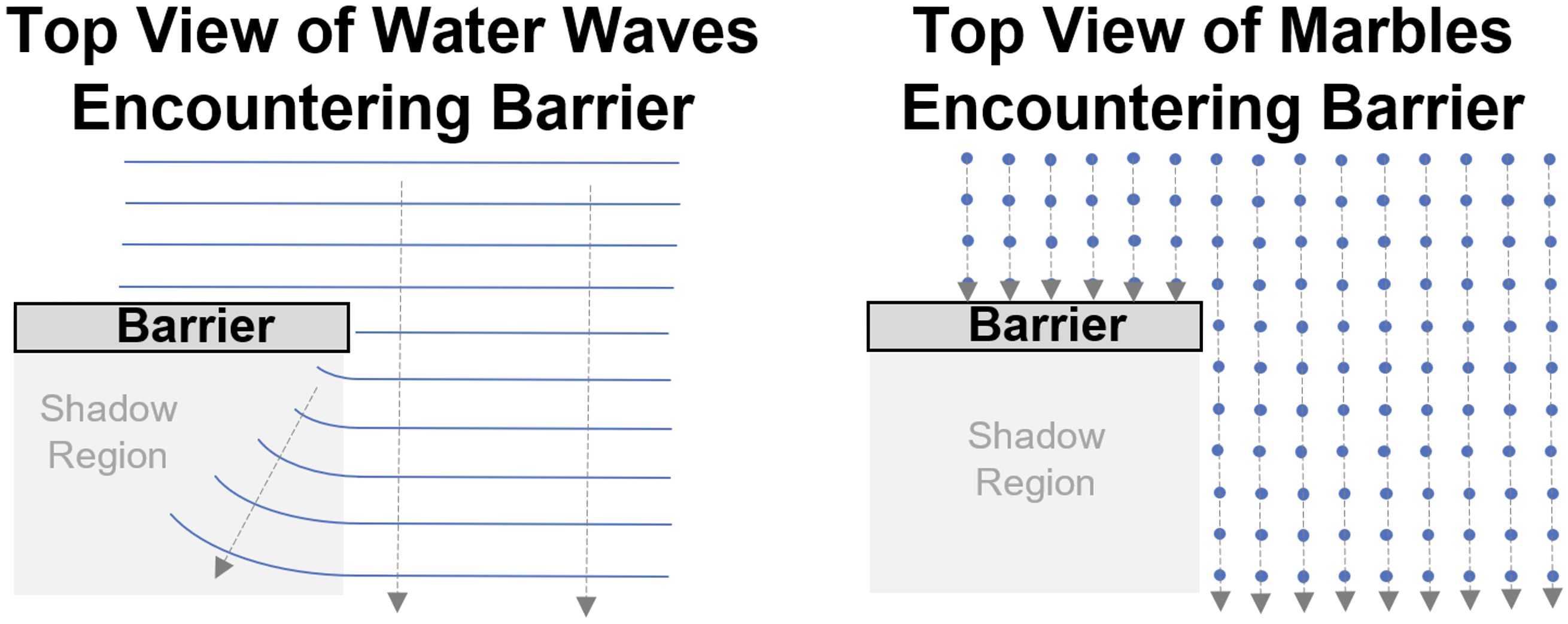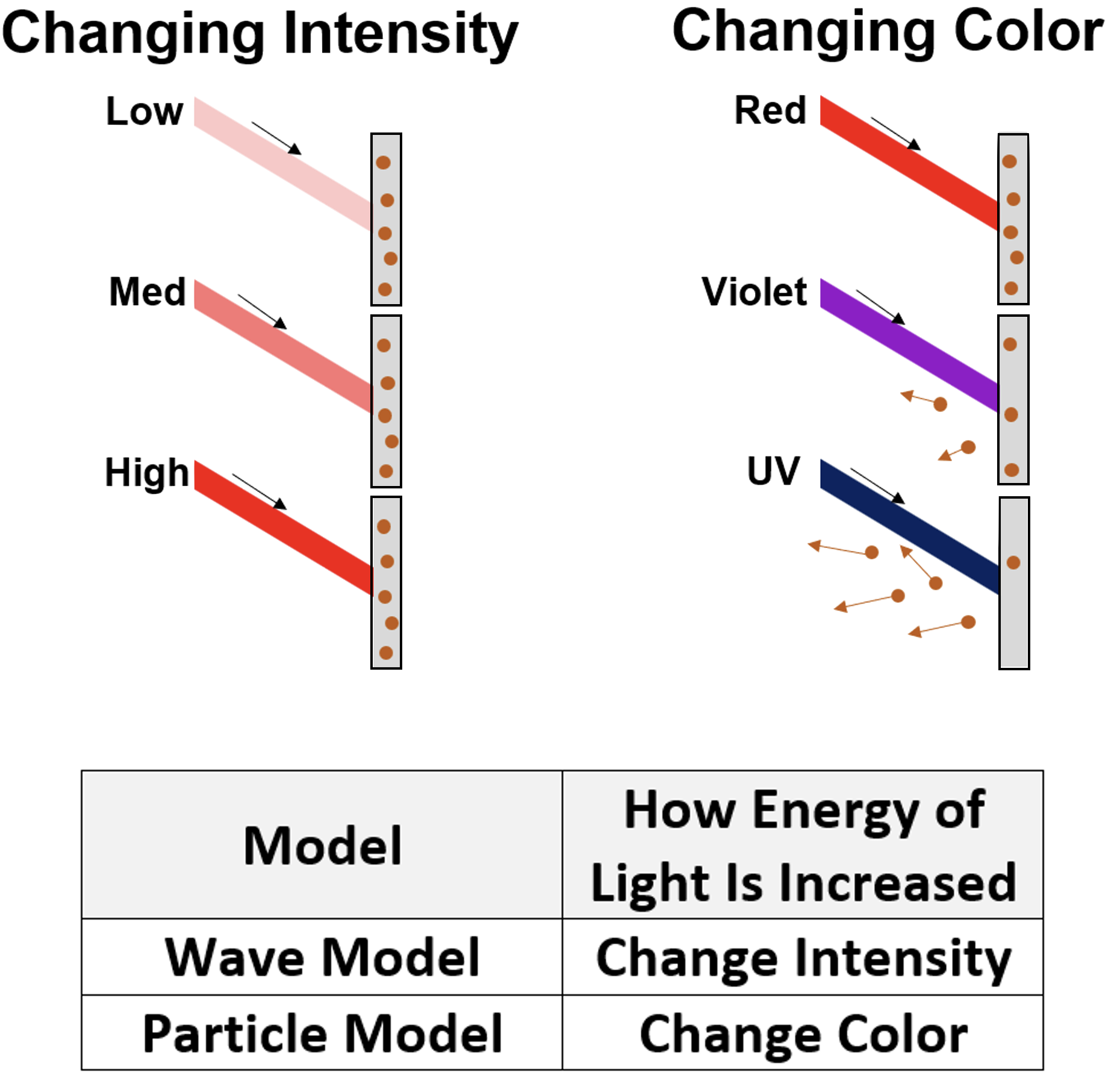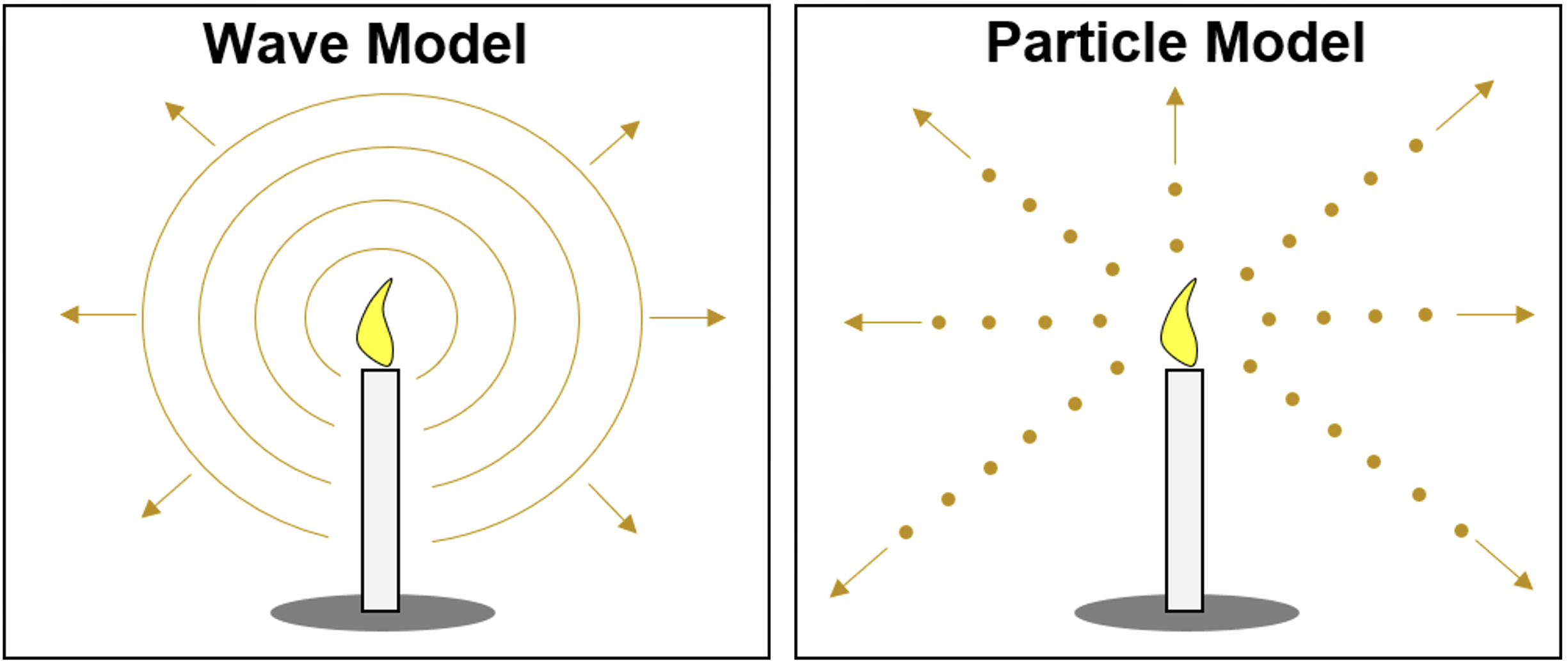Models of Light
Version 1.0
Objective: To identify whether positive, negative, or zero work is being done, to identify the force that is doing the work, and to describe the energy transformation associated with such work.
This is the Teacher Preview mode of this Science Reasoning task.
Teacher Preview allows teachers to preview the Questions for each Activity and their organization into Question Groups. This allows you to evaluate the appropriateness of the Activity for your students. Teacher Preview also allows you to consider whether you would like to customize the task by removing one or more of the Activities from the assignment. Customization can be done within Task Tracker when you assign the task to your class.
Start Teacher Preview Mode
Wait for it ..
Loading ...
You are currently logged in with the username shown below. As long as you maintain an internet connection, any of the parts of this Activity that you complete will be saved in your account.
Tap on the Start Button to begin.
Tap on the Start Button to begin.
You are NOT using this Activity as a Logged-in student. You may log in and return to this page. Or you can do this Activity as a Guest. If you continue as a Guest, a record of completing it will NOT be stored in our database.
Start
Use Key Pad to Enter Name. Then Tap the Enter Button.
capOff
1
2
3
4
5
6
7
8
9
0
-
Q
W
E
R
T
Y
U
I
O
P
Space
A
S
D
F
G
H
J
K
L
Enter
Z
X
C
V
B
N
M
Backspace
Shift
Models of Light
An NGSS-inspired activity on the wave and particle models of light.
Student Name:
Light Reflection
Analyze the reflection of light from the perspective of both the wave model and the particle model.
Start
Redo
Diffraction
Analyze the diffraction of light from the perspective of both the wave model and the particle model.
Start
Redo
Light Interference
Analyze the interference of light from the perspective of both the wave model and the particle model.
Start
Redo
The Photoelectric Effect
Analyze the photoelectric effect from the perspective of both the wave model and the particle model.
Start
Redo
Evaluating Claims
Summarize the evidence that supports the wave model and the particle model of light.
Start
Redo
Scroll to View Whole Passage. Tap to Close.
Each Science Reasoning task is based on a passage or story that presents data and information or describes an experiment or phenomenon. Students must combine an understanding of science content and science reasoning skills (science practices) to answer questions about the passage or story.
Tap anywhere to view the passage.
Student Name:
Currently Displaying ...
Activity:
--
This is the last Activity
in this task.
in this task.
Activity:
Progress Report
Question Group:
--
This is the last QG
of the last Activity.
of the last Activity.
1
2
3
4
Activity 2: Diffraction
The left figure shows that, when water waves strike a barrier, they bend into the shadow region. This phenomenon is called diffraction. The right figure shows that, when rolling marbles strike a barrier, no marbles bend into the shadow region but instead continue to move in a straight line.

The left figure shows that, when water waves strike a barrier, they bend into the shadow region. This phenomenon is called diffraction. The right figure shows that, when rolling marbles strike a barrier, no marbles bend into the shadow region but instead continue to move in a straight line.

5
6
7
8
Question
9
10
11
12
This is the last Question
of the last Activity.
of the last Activity.
--
13
14
15
16
Tap to View Information:
Learn More About Task Tracker and Teacher Preview.
Check Answer
Some Interactivity and Check Answer functionality is disabled when in Teacher Preview mode.
If you return to the Main Menu, then you will lose all your progress
on this activity.
Are you sure you want to return to the Main Menu?
Yes, Return
No, Stay Here
Each Science Reasoning task is based on a passage or story that presents data and information or describes an experiment or phenomenon. Students must combine an understanding of science content and science reasoning skills (science practices) to answer questions about the passage or story.
Tap anywhere to view the passage.
Student Name:
Currently Displaying ...
Activity:
--
This is the last Activity
in this task.
in this task.
Activity:
Progress Report
Question Group:
--
This is the last QG
of the last Activity.
of the last Activity.
1
2
3
4
Activity 4: Photoelectric Effect
A famous experiment that scientists have performed is called the photoelectric effect. In this experiment, under certain conditions light can ‘kick out’ (or emit) electrons from a piece of metal. The left figure shows the results of an investigation where the intensity (brightness) of the light was changed. The right figure shows the results of an investigation where the color of light was changed. The bottom table shows the property of light that is associated with increased energy in each model.

A famous experiment that scientists have performed is called the photoelectric effect. In this experiment, under certain conditions light can ‘kick out’ (or emit) electrons from a piece of metal. The left figure shows the results of an investigation where the intensity (brightness) of the light was changed. The right figure shows the results of an investigation where the color of light was changed. The bottom table shows the property of light that is associated with increased energy in each model.

5
6
7
8
Question
9
10
11
12
This is the last Question
of the last Activity.
of the last Activity.
--
13
14
15
16
Tap to View Information:
Learn More About Task Tracker and Teacher Preview.
Check Answer
Some Interactivity and Check Answer functionality is disabled when in Teacher Preview mode.
If you return to the Main Menu, then you will lose all your progress
on this activity.
Are you sure you want to return to the Main Menu?
Yes, Return
No, Stay Here
Each Science Reasoning task is based on a passage or story that presents data and information or describes an experiment or phenomenon. Students must combine an understanding of science content and science reasoning skills (science practices) to answer questions about the passage or story.
Tap anywhere to view the passage.
Student Name:
Currently Displaying ...
Activity:
--
This is the last Activity
in this task.
in this task.
Activity:
Progress Report
Question Group:
--
This is the last QG
of the last Activity.
of the last Activity.
1
2
3
4
Activity 1: Reflection
Scientists have long asked the question, “What is light?” Throughout history, two models have been explored:

Throughout this activity, we’ll use water waves to represent the wave model and marbles to represent the particle model.
Scientists have long asked the question, “What is light?” Throughout history, two models have been explored:

Throughout this activity, we’ll use water waves to represent the wave model and marbles to represent the particle model.
5
6
7
8
Question
9
10
11
12
This is the last Question
of the last Activity.
of the last Activity.
--
13
14
15
16
Tap to View Information:
Learn More About Task Tracker and Teacher Preview.
Check Answer
Some Interactivity and Check Answer functionality is disabled when in Teacher Preview mode.
If you return to the Main Menu, then you will lose all your progress
on this activity.
Are you sure you want to return to the Main Menu?
Yes, Return
No, Stay Here
Each Science Reasoning task is based on a passage or story that presents data and information or describes an experiment or phenomenon. Students must combine an understanding of science content and science reasoning skills (science practices) to answer questions about the passage or story.
Tap anywhere to view the passage.
Activity 3: Interference
The left figure shows how water waves diffract as they pass through two slits. These curved waves then interfere with each other to make places of constructive and destructive interference. The middle figure shows that when moving marbles encounter a wall with two openings, the marbles aligned with the slits go through in a straight line. The right figure shows how when laser light shines through two very tiny slits that are very close together, a pattern of bright and dark spots appears on a distant screen.

The left figure shows how water waves diffract as they pass through two slits. These curved waves then interfere with each other to make places of constructive and destructive interference. The middle figure shows that when moving marbles encounter a wall with two openings, the marbles aligned with the slits go through in a straight line. The right figure shows how when laser light shines through two very tiny slits that are very close together, a pattern of bright and dark spots appears on a distant screen.

Student Name:
Currently Displaying ...
Activity:
--
This is the last Activity
in this task.
in this task.
Activity:
Tap Me!
Tap Me!
Tap Me!
Progress Report
Question Group:
Tap Me!
--
This is the last QG
of the last Activity.
of the last Activity.
1
2
3
4
Tap Me!
Tap Me!
5
6
7
8
Tap Me!
Tap Me!
Question
Tap Me!
9
10
11
12
This is the last Question
of the last Activity.
of the last Activity.
--
Tap Me!
13
14
15
16
Tap Me!
Tap to View Information:
Learn More About Task Tracker and Teacher Preview.
Check Answer
Some Interactivity and Check Answer functionality is disabled when in Teacher Preview mode.
If you return to the Main Menu, then you will lose all your progress
on this activity.
Are you sure you want to return to the Main Menu?
Yes, Return
No, Stay Here
Template Version 1.2 Added Question Scene 4 for Table Completion
Used/Unused Q
Management
Management
AddValues
Insert
Empty
Reduce
0
0,0,0,0,0,0,0,0,0,0,0,0,0
0,0,0,0,0,0,0,0,0,0,0,0,0
0
Full
6,4,1,5,1
3,3,3,3,3,3,1,1,1,1,6,2,2,2,2,2,6
5
0
3
0
MS
3
0,0,0,0,0
Reflection,Diffraction,Interference,Photoelectric Effect,Evaluating Claims
https://www.physicsclassroom.com/
Physics-Interactives/Static-Electricity/
Name-That-Charge/
6
U
Backspace
Loading ...
A
N
Wait for it ..
Objective: To identify whether positive, negative, or zero work is being done, to identify the force that is doing the work, and to describe the energy transformation associated with such work.
M
T
3
0
Start
G
Space
You are NOT using this Activity as a Logged-in student. You may log in and return to this page. Or you can do this Activity as a Guest. If you continue as a Guest, a record of completing it will NOT be stored in our database.
4
L
S
This is the Teacher Preview mode of this Science Reasoning task.
Teacher Preview allows teachers to preview the Questions for each Activity and their organization into Question Groups. This allows you to evaluate the appropriateness of the Activity for your students. Teacher Preview also allows you to consider whether you would like to customize the task by removing one or more of the Activities from the assignment. Customization can be done within Task Tracker when you assign the task to your class.
-
F
Z
9
You are currently logged in with the username shown below. As long as you maintain an internet connection, any of the parts of this Activity that you complete will be saved in your account.
Tap on the Start Button to begin.
Models of Light
Start Teacher Preview Mode
K
P
E
Y
1
2
J
8
Q
X
D
I
Use Key Pad to Enter Name. Then Tap the Enter Button.
Version 1.0
7
R
W
Enter
C
capOff
H
B
Shift
O
V
5
Analyze the reflection of light from the perspective of both the wave model and the particle model.
Student Name:
Redo
Analyze the interference of light from the perspective of both the wave model and the particle model.
An NGSS-inspired activity on the wave and particle models of light.
Summarize the evidence that supports the wave model and the particle model of light.
Analyze the photoelectric effect from the perspective of both the wave model and the particle model.
Light Interference
Analyze the diffraction of light from the perspective of both the wave model and the particle model.
Light Reflection
Evaluating Claims
The Photoelectric Effect
Diffraction
No, Stay Here
Yes, Return
Activity:
--
Check Answer
8
Each Science Reasoning task is based on a passage or story that presents data and information or describes an experiment or phenomenon. Students must combine an understanding of science content and science reasoning skills (science practices) to answer questions about the passage or story.
Tap anywhere to view the passage.
16
Currently Displaying ...
Some Interactivity and Check Answer functionality is disabled when in Teacher Preview mode.
Tap to View Information:
15
Question
14
This is the last Activity
in this task.
13
Activity 2: Diffraction
The left figure shows that, when water waves strike a barrier, they bend into the shadow region. This phenomenon is called diffraction. The right figure shows that, when rolling marbles strike a barrier, no marbles bend into the shadow region but instead continue to move in a straight line.
Activity:
This is the last QG
of the last Activity.
12
Learn More About Task Tracker and Teacher Preview.
11
This is the last Question
of the last Activity.
10
Scroll to View Whole Passage. Tap to Close.
Progress Report
7
Question Group:
If you return to the Main Menu, then you will lose all your progress
on this activity.
Are you sure you want to return to the Main Menu?
9
Insert
https://www.physicsclassroom.com/
Empty
MS
Physics-Interactives/Static-Electricity/
Full
Reduce
3,3,3,3,3,3,1,1,1,1,6,2,2,2,2,2,6
Name-That-Charge/
Template Version 1.2 Added Question Scene 4 for Table Completion
0
6,4,1,5,1
0,0,0,0,0,0,0,0,0,0,0,0,0
Used/Unused Q
Management
Reflection,Diffraction,Interference,Photoelectric Effect,Evaluating Claims
0,0,0,0,0
AddValues
Activity 4: Photoelectric Effect
A famous experiment that scientists have performed is called the photoelectric effect. In this experiment, under certain conditions light can ‘kick out’ (or emit) electrons from a piece of metal. The left figure shows the results of an investigation where the intensity (brightness) of the light was changed. The right figure shows the results of an investigation where the color of light was changed. The bottom table shows the property of light that is associated with increased energy in each model.
Activity 1: Reflection
Scientists have long asked the question, “What is light?” Throughout history, two models have been explored:
Throughout this activity, we’ll use water waves to represent the wave model and marbles to represent the particle model.
Tap Me!
Activity 3: Interference
The left figure shows how water waves diffract as they pass through two slits. These curved waves then interfere with each other to make places of constructive and destructive interference. The middle figure shows that when moving marbles encounter a wall with two openings, the marbles aligned with the slits go through in a straight line. The right figure shows how when laser light shines through two very tiny slits that are very close together, a pattern of bright and dark spots appears on a distant screen.
Tap Me!